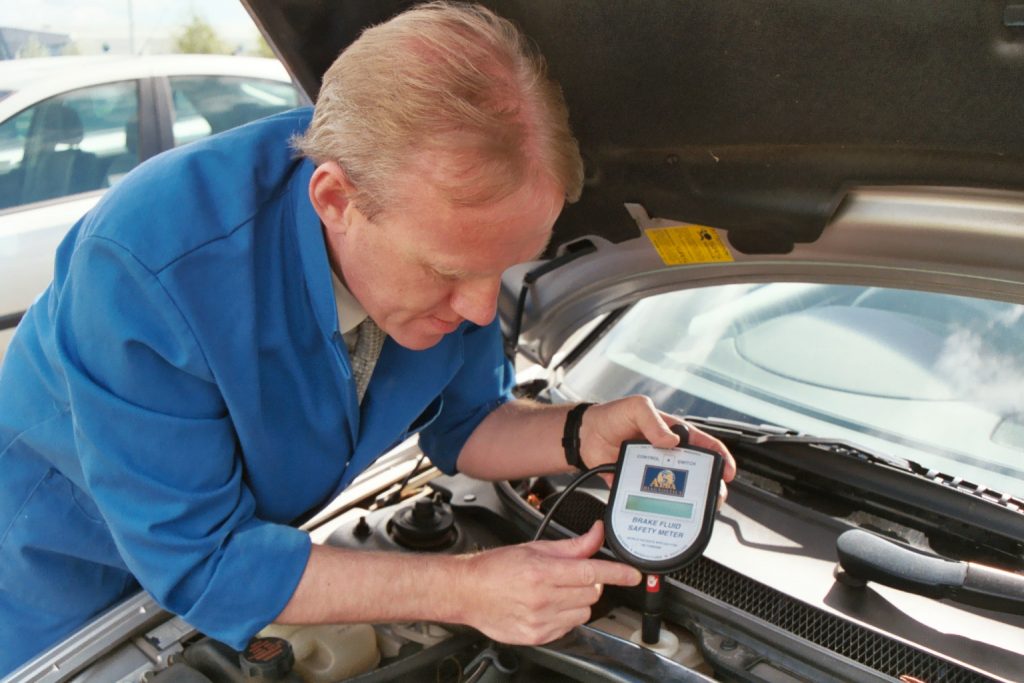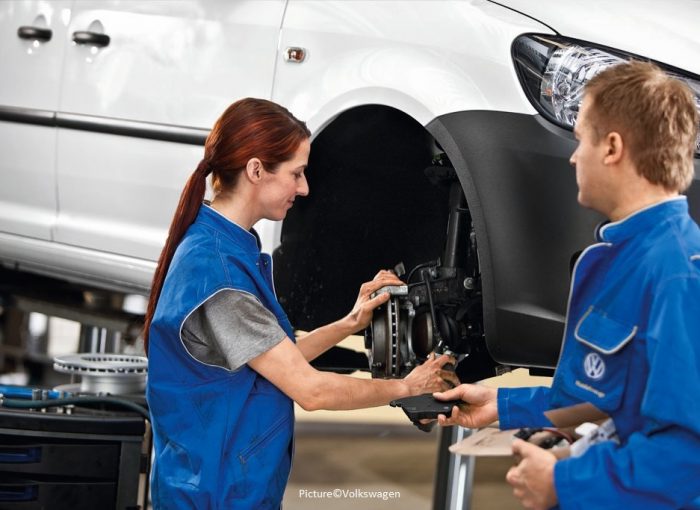We see a lot of advice from supposed experts making all sorts of outlandish claims. That changing brake fluid is a simple DIY job is one of these. And because the brakes are such a fundamental part of the car’s safety system, it’s not worth taking any risks.
Is changing brake fluid a DIY job?
We don’t think it is. To change brake fluid properly and easily, you need quite a lot of equipment. You also need a reasonable amount of mechanical know how. For example, do you know the difference between old and new brake fluid? Thought not. But it’s important that you can tell the difference between the two.
How often and why should you change it?
Brake fluid is hydraulic fluid, sometimes known as brake oil. It amplifies the pressure you put on the middle pedal, pushing the brake pads against the discs at each wheel and slowing your car.
Over time, brake fluid absorbs water so needs changing because it becomes less efficient at doing its job. That’s why car makers usually recommend you change brake fluid every other year.

Why is it such a tricky job?
If you look under the bonnet you will see your car’s brake fluid reservoir. You could empty this using a turkey baster or some other means of drawing the fluid out. You can then top up the reservoir with new fluid.
Sounds simple enough but that’s only half the job. There’s about the same amount of still-old fluid remaining in the braking system.
To remove this, you need to take the car’s individual wheels off. To do this safely you shouldn’t leave the car jacked up. Put it on axle stands. You then have to find the bleed valve on the brake caliper, attach your hose to it and undo the valve.
Assuming you don’t have something to suck the fluid out, here’s where you need a willing companion to sit in the driver’s seat. Their job is to press and release the brake pedal when you tell them to. This will pressurise the system and cause brake fluid to flow out. You have to do that for each wheel, allowing the old fluid to run out until it’s replaced by new fluid.
So assuming you don’t have a hydraulic lift or four axle stands, you need to take one wheel off at a time. Boring and time consuming.
Other potential problems
If you don’t know what you’re doing and you carry out the sequence of pressing/releasing the brake and tightening/untightening the bleed valves in the wrong order, there’s a good chance you’ll introduce an air lock to the system. That could be very dangerous indeed.
You also need to have the right sized spanner to release the bleed valve and the right sized hose to go on the bleed valve.
And you have to keep filling the reservoir. As you bleed the individual brakes until you see clean new liquid coming through, the reservoir of new liquid will fall. If you run this dry, you will be allowing air into the system. That might mean your brakes don’t work when you need them.
You also need to buy the right kind of brake fluid. These are called DOT 3, DOT 4, DOT 5 and DOT 5.1. You can’t mix and match so check your car’s user manual to see what you’ve got and replace like for like.

I’ve been writing about cars and motoring for more than 25 years. My career started on a long-departed classic car weekly magazine called AutoClassic. I’ve since pitched up at Autosport, Auto Express, the News of the World, Sunday Times and most recently the Daily Telegraph. When I’m not writing about cars and motoring, I’m probably doing some kind of sport or working in my garden.







